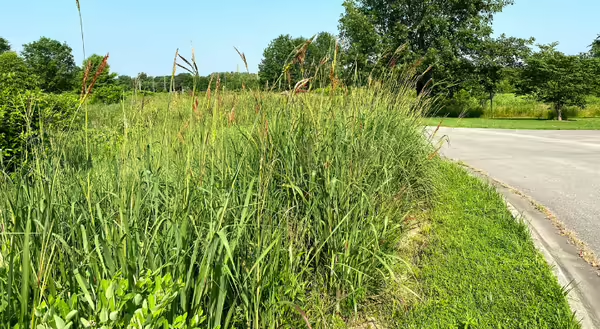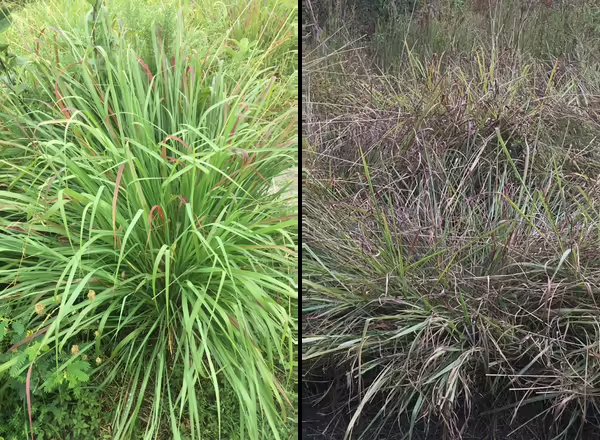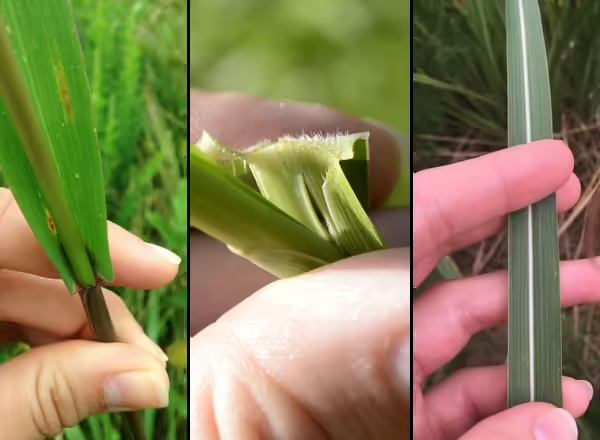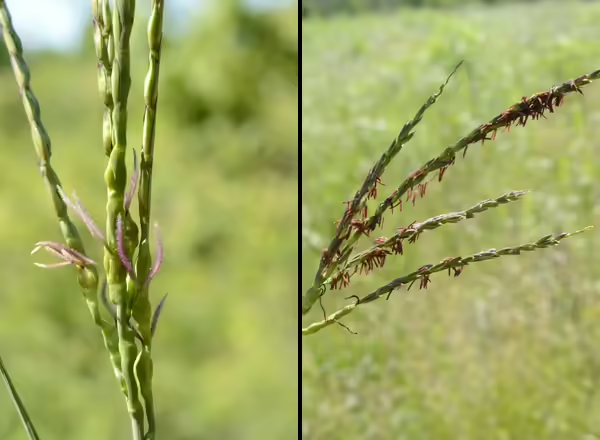
I spent a lot of time exploring restored grasslands during grad school while collecting data for my research. I had become familiar with the most common grasses in the area, but one day I ran across something that didn't look super familiar. I didn’t know what to think at first, because it looked like a mutant version of Big Bluestem, with a turkey foot-shaped flower cluster that was much bigger than it should have been - about 7 inches - rather than 2 inches!
Looking up the grass when I got out of the field led me to learn about Gama Grass, Tripsacum dactyloides. This is a lesser-known prairie grass that I think deserves more attention!
Where Gama Grass grows
Gama Grass is a warm-season, robust bunchgrass that grows in open grassland areas. It can be found in prairies as well as growing along the roadside. It is found in west-central and southern Illinois – view its distribution map at BONAP.net. Gama Grass can grow 5 to 7 feet tall, and an individual bunch can be several feet wide.

Growth habit
One of the most unique identification characteristics for this grass comes later in the growing season. Rather than the leaf blades and stems continuing to grow in a tight bunch, the grass will start growing in a way that makes it look like someone came and sat down in the middle of the bunch, pushing the tall blades of grass and stems out to the sides. This growth habit is very distinctive for this grass.

Looking at the leaves
The large leaves easily surpass a foot in length, and they have a prominent thick white midrib. The leaf blades are very sharp so be careful when handling this grass. The leaves tend to wrap around and clasp the stems. When you pull a leaf blade back from the stem to find the ligule (which is easier said than done with this grass – the foliage is very thick), you’ll find a ligule made up of short, bristly hairs.

Turkey foot-shaped inflorescence
By far the most recognizable part of this grass is the inflorescence. The inflorescence is a raceme, made up of three or more finger-like collections of spikelets, which range from four to ten inches long. This grass is monoecious, which means it has separate male and female flowers, but they are on the same plant. The female flowers are found at the base of the raceme, and when in flower you can see their stigmas exserted, looking like red fuzzy tentacles. The male flowers can be found on the upper ¾ of the raceme, and when in flower, you can see the orange to brown anthers.
Have you seen Gama Grass? I think this grass would be a great substitute for Miscanthus grasses that are often used in landscaping, but would allow you to bring a piece of the moist prairies of Illinois to your own backyard.
Never miss a new post! Sign up for our email list.
ABOUT THE AUTHOR: Erin Garrett is a Natural Resources, Environment, and Energy Educator for University of Illinois Extension serving Alexander, Johnson, Massac, Pulaski, and Union counties. Erin develops and delivers high impact programming to adults and youth to help them develop an appreciation for natural resources and to empower them to make small changes to positively impact the environment. Erin’s programming focuses on why homeowners should consider choosing native plants, how to support native pollinators, how to identify grasses, how to identify and manage invasive species, and developing an appreciation for prairie ecosystems.
ABOUT THE BLOG: Grasses at a Glance dives into grass identification, focusing on tips and tricks that make grass identification possible. Get information about native and non-native species, how to tell look-alikes apart, and which grasses you can find in Illinois. Never miss a new post! Sign up for our email list.
Gama Grass, Tripsacum dactyloides, is a native, warm season grass mostly found in the southern half of Illinois. It is a robust bunchgrass that grows in moist prairies, and this grass produces large bunches with flowering stalks that can grow up to seven feet tall. The leaves of...